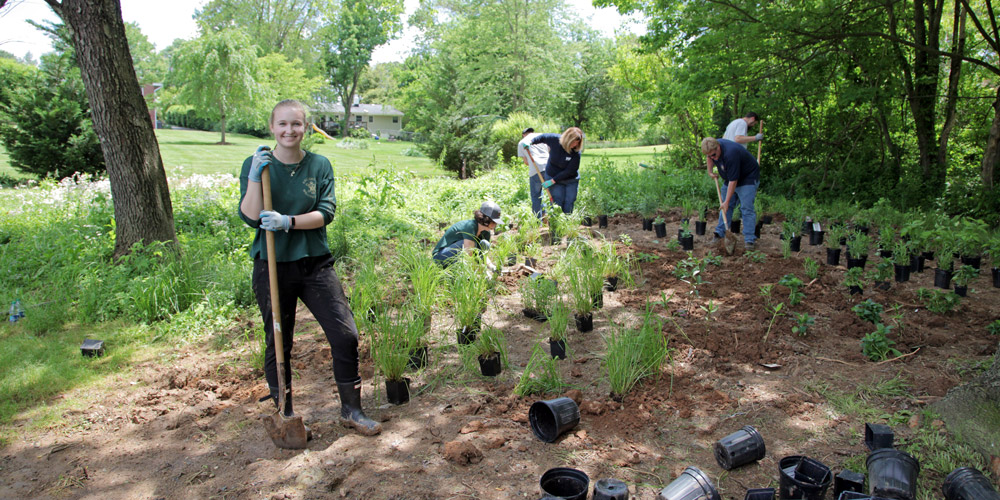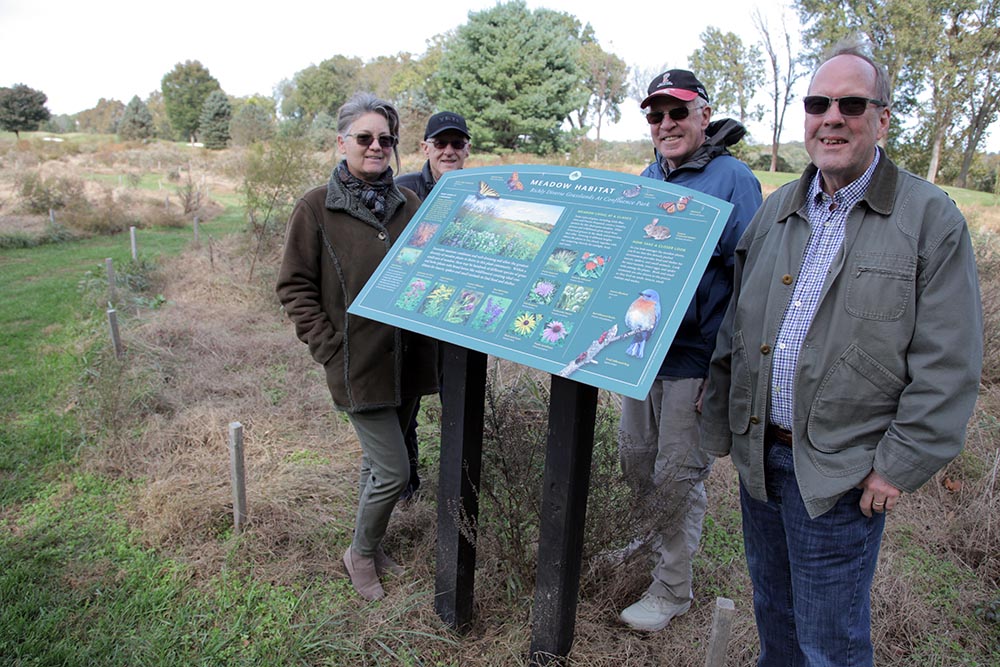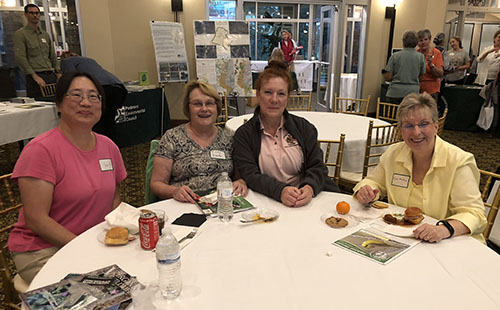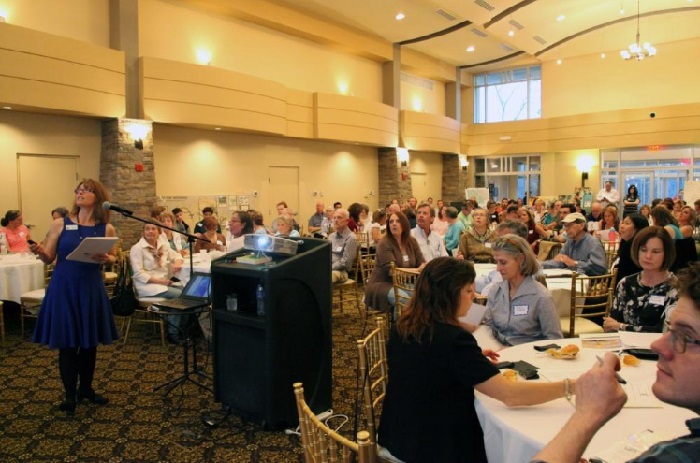Homeowners need to get involved with their HOAs to ensure they avoid the use of invasive plants. There are several ways individuals can take action to do so, such as attending meetings, contacting the board members, serving on a committee, and creating volunteer events.
Greening Your HOA
PEC helps homeowners and homeowners associations create healthier communities by adopting environmentally and economically sustainable landscaping practices. We offer resources, networking opportunities, case studies, tours and trainings to facilitate change that will result in common spaces for the greater good.

Capturing the Rain: Green Infrastructure Options for HOA Common Areas
Many residents frequent common areas that are managed by homeowners associations, churches, or local governments. How these entities manage their public landscapes can have a profound effect on the health of our local ecosystems, wildlife, streams and drinking water sources. HOA’s in particular have a significant amount of common area that is often just mowed grass.

Common Space for the Greater Good
Over 60 percent of Loudoun residents, live in a Homeowners Association-controlled community. How these communities manage their landscapes can have a profound effect on the health of our local ecosystems, wildlife, streams and drinking water sources.

Loudoun HOA communities share and discover practical steps for healthier landscaping
The second Homeowners Association (HOA) forum, “Common Space for the Greater Good,” was held on October 11, 2018 and attended by nearly 100 guests representing 33 HOA communities.
“Practical Steps for Healthier Landscapes” was the second installment of Loudoun HOA programs organized by The Piedmont Environmental Council (PEC) and partners. This forum was co-hosted by Loudoun Wildlife Conservancy (LWC), the Northern Virginia Partnership for Invasive Species Management (NoVA PRISM), and the Virginia Department of Game and Inland Fisheries’ Habitat Partners© Program (VDGIF).
Loudoun Homeowners Associations As Change Agents
The new residential communities of Loudoun and many other counties in our region are managed by Homeowner’s Associations (HOA). In the PEC region, over 60% of Loudoun residents live in an HOA-controlled community. These communities encompass more than 10% of the total land area in Loudoun County.
Beyond Loudoun, in counties, cities and towns that have experienced the growth of new neighborhoods in the last 30+ years, HOA management is the norm for new communities. Understanding the how and why of how landscaping affects our health is critical to making better choices.

Lessons Learned & Presentations from the 2016 Loudoun HOA Forum
On the evening of March 10, 2016 more than 150 individuals attended a forum in eastern Loudoun focused on improving landscaping practices for stream health, water quality and the environment. Hosted by The Piedmont Environmental Council in partnership with Loudoun County, Common Space for the Greater Good presented solutions for Home Owners Associations and residents to restore streams, reduce pollution and attract birds, bees and butterflies – and provided real-life examples that have been adopted by many communities in Loudoun and elsewhere.
Trees Planted, Smiling Faces
In partnership with Sugarland Run HOA, the Broadlands HOA, the Red Cedar HOA and Loudoun County Government, we’ve finished planting 3.26+ acres, 968 native trees and shrubs, in three Loudoun Communities.
Thank you to our wonderful volunteers and involved communities for helping Loudoun streams, our local environment and the Chesapeake Bay! Thanks also to grants from The National Fish and Wildlife Foundation and Fairfax Water, and generous in-kind support by Heritage Landscape Services, LLC and Premier Turf and Landscaping.
Sugarland Run Tree Planting — Spring 2015
On Saturday, April 25th, the Sugarland Run community planted over 160 native trees and shrubs to help reduce air and water pollution in Sterling and add beneficial habitat. Over 80 people turned out to get a little dirty and work together for the environment and enjoy a feeling of accomplishment.
Floating Island Installation at Broadlands
Working together for cleaner water. Volunteers planted three floating islands that will filter nutrient runoff from a Broadlands stormwater pond. Loudoun County Government stormwater staff launched the islands with weights and needed protection from geese until the plants mature. The protection and weights will then be removed.
The Piedmont Environmental Council collaborated with Broadlands Naturally (through the habitat committee of the Broadlands HOA) and Loudoun County, supported by grants from National Fish and Wildlife Foundation and Fairfax Water. Thanks to all who made it possible!
Healthy, Safer Families, and Communities
Arsenic and rocket fuel in our water. Gender-altering hormones and medications in our rivers and streams. PCBs, dioxins and pesticides in breast milk. Lead in children’s toys and women’s lipstick. Hazardous ingredients in air fresheners, development disrupting chemicals in plastic baby bottles and dangerous fumes from vinyl shower curtains. Our world is awash in chemicals and pollutants that pose health risks to our families, our communities and our environment.
